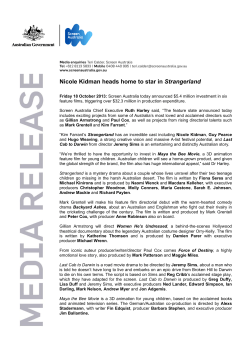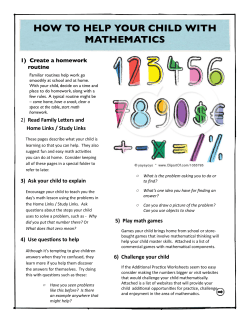
Document 237654
WHAT IS INTEGRATIVE MEDICINE? Integrative Medicine: 1 + 1 = 2+ • Integra(ve Medicine is simply the prac(ce of combining the best of both Conven(onal & Natural Medical approaches in an integra(ve diagnos(c and therapeu(c treatment model. • It acknowledges that func(onal changes in how bodily systems operate o?en precede structural changes by many months or even years, and that by correc(ng dysfunc(onal paAerns in one’s diet, lifestyle, biochemistry and physiology, one can o?en prevent the need for expensive medical treatments later on in life. • In other words, it’s a bit like preventa(ve maintenance on your car; by fixing problems early, one can save on major mechanical bills later on. • How does it compare to conven(onal Western Medicine ??????? • 1. Integra(ve Medicine (I-‐M) has an en(rely different philosophical approach, much in keeping with ancient Greco-‐ Roman tradi(ons. • 2. We u(lize a far wider range of diagnos(c techniques, including Func(onal Pathology, Live Blood Analysis, Hair Tissue Mineral Analysis, Specialized gene(c tes(ng and Chela(on challenge tests for the diagnosis of heavy metal toxici(es. • 3. We emphasize the importance of proper nutri(on & balanced lifestyles in disease preven(on. • 4. We emphasize the proper use of nutri(onal supplements and herbal remedies, recognizing each person’s biochemical individuality & specific nutri(onal needs, which can not be adequately supplied with a so-‐called “balanced diet.” • 5. We u(lize other healing modali(es to engender posi(ve health outcomes: Ø Nutri(onal Medicine Ø Herbal Medicine Ø Environmental Medicine & Clinical Toxicology Ø Stress reduc(on techniques Ø Acupuncture & Chinese herbal medicine Ø Ayurvedic therapies Ø Osteopathy Ø Genomic medicine Ø Other approaches may be used selec(vely in individual circumstances • By contrast, Western Bio-‐Medicine has more or less adopted the “Name it – Blame it – Tame it” approach to disease management: i.e. u Name the condi(on (even if the condi(on is one that has to be invented to sell a par(cular type of pharmaceu(cal drug!) u AAribute causa(on (even if that is pure guesswork!) u Select one or more drugs to fix the problem (and keep the pa(ent on these Pharmaceu(cal poisons as long as humanly possible, in order to keep the profits flowing through to the Pharmaceu(cal Companies, so that they return handsome dividends to their Chief Execu(ves & Shareholders!) • So, how does aromatherapy fit in with Integra(ve Medicine? • Answer: • It doesn’t! (Well, not just yet!) • Many years ago, prior to the advent of Pharmaceu(cal Medicine, doctors were all trained in the science of Pharmacognosy. This is the science of understanding and applying the medicinal proper(es of plants for therapeu(c purposes. • As (me went by, Medical Schools & Pharmacy Colleges gradually stopped teaching this subject, and replaced it with the more fashionable science of Pharmacology – the study of drugs. • Some Colleges of Pharmacognosy s(ll exist in England and Europe, but may lie outside of mainstream Medical & Pharmaceu(cal University training programs. • Many drugs that we have today are indeed derived from plant compounds – whether the Pharmaceu(cal industry acknowledges the fact or not. • In its proper context, Aromatherapy should be viewed as an important part of the prac(ce of medicinal chemistry in general, and Herbal Medicine in par(cular. • The use of healing oils is widely used in Ayurvedic Medicine, both for massage and inhala(on for therapeu(c purposes. • I believe that all health care prac((oners require training in the principles and safe prac(ce of this wonderful healing modality, that is, in using both the therapeu(c oils and other substances with which plants are endowed. • Now, which Australian NaAve plants may potenAally become future sources of essenAal oils for therapeuAc applicaAon? Australian Native Aromatic Plants • 1. Eriostemon myoporoides (Philotheca myoporoides) • Long-‐leafed Wax flower, member of Citrus family (Rutaceae) • Na(ve to Southern Queensland, New South Wales and Victoria, is a medium to large shrub with a long flowering season of small but showy flowers, set amid a nice mid-‐green foliage. It is a hardy plant that will thrive through both cold and drought condi(ons. Likes a sunny posi(on. • The narrow leaves are of a slightly waxy appearance up to 8 cm long • Buds of apple-‐blossom pink open to flat, starry flowers with five white petals. The flowers are no more than 2 cm across but show out well against the green foliage. • Best months are usually October and November when flowering is profuse across the whole shrub. Eriostemon myoporoides Australian Native Aromatic Plants • 2. Prostantheras ( Na(ve Mint bushes) • Genus of ~ 80 species, represented throughout all States • Predominantly small – medium sized bushy shrubs, although some may grow into large shrubs – small trees (Prostanthera lasianthos -‐ Victorian Christmas Bush) • Leaves are highly aroma(c, and were used by the early seAlers as a mint tea. • Easy to grow in shaded, well watered condi(ons, protected from strong winds • Harvest regularly to promote bushy growth Prostanthera lasianthos Australian Native Aromatic Plants • 3. Backhousia citriodora (Lemon Myrtle) • Endemic genus of 7 species, found predominantly in rainforest regions of Queensland & NSW • Shrubs to small trees, with creamy white flowers • Dark green ovate – lanceolate leaves to 12cm in length • Flowers in Summer – Autumn • Strong, clear lemon fragrance from the buds, flowers & leaves, which is used in herbal teas, soaps, cosme(cs etc. Backhousia citriodora Australian Native Aromatic Plants • 4. Hymenosporum flavum (Na(ve Frangipani) • Na(ve evergreen tree, growing to 20m in its natural habitat, but more commonly 3-‐5m as a street tree in City of Monash • As a garden specimen, may grow up to 7-‐ 10m in height • Shiny dark green leaves up to 16ch in length • Panicles of creamy – yellow flowers in late spring – early summer, with a most delighoul fragrance • Single species, closely related to the PiAosporum family Hymenosporum Elavum (Native Frangipani) Australian Native Aromatic Plants • 5. PiAosporum undulatum (Sweet PiAosporum) • Na(ve to all four Eastern states, growing as an understory shrub or small tree in montane forest areas (e.g. East Gippsland) • Declared Environmental weed in Victoria, outside of its natural habitat • Seeds readily spread by na(ve birds, and germinate in disturbed soils • Frequently seen in Melbourne’s parklands & home gardens • Delicious fragrance in late spring – early summer • Please – chop these trees down and make essen(al oils from them! Pittosporum undulatum Australian Native Aromatic Plants • 6. Westringias (Na(ve Rosemary) • An Australian endemic genus comprising around 30 species, na(ve to all states exc. NT. • Member of the lamiaceae family, includes na(ve mint bushes (Prostantheras), lavenders, rosemary, basil, mints, sage, marjoram, thyme & oregano • Characterized by stems that are square in cross-‐sec(on • The commonest species are Westringia glabra & W. fru(cosa. A popular garden variety is W. Wynyabbie Gem. Westringia fruticosa Westringia Wynyabbie Gem Australian Native Aromatic Plants • 7. Other Australian NaAve Species Ø Boronias – esp. B. megas(gma (Brown Boronia) Ø Thrytomene – esp. T. calycina (Grampians Thrytomene) Ø Callitris species – na(ve Cypress pines e.g. Callitris intratropica, or Northern Cypress Pine / Blue Cypress – na(ve to Tiwi Islands & NT. Ø Na(ve Dendrobium orchids – D. kingianum, D. speciosum, D. falcorostrum and their hybrids – protected plants, illegal to collect from the wild, but readily cul(vated under shadecloth in Melbourne Ø Callistemons (BoAle brushes) – e.g. C. citrinus Ø Melaleucas (Paperbarks & Honey Myrtles) – e.g. M. linariifolia (Snow in Summer) Ø Leptospermums (Tea-‐trees) – e.g. L. scoparium Dendrobium speciosum Conclusions • 1. Lots of discoveries are simply made by trial and error! • 2. Experiment for yourselves • 3. Record your findings & share your discoveries with others! • For more informa(on on Integra(ve medicine , and the clinical & educa(onal services we offer, please go to: • www.niim.com.au • • THANK YOU
© Copyright 2025





















